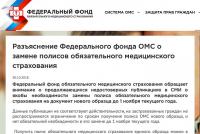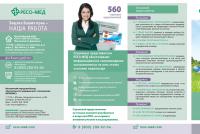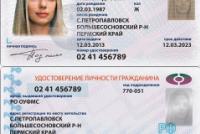Does the tax 6 personal income tax and rsv. Explanations on discrepancies between personal income tax and insurance premiums. Amount of payments in favor of individuals
Personal income tax and insurance premiums with material benefits on loans. How to take into account the costs of renting an employee's personal car in taxation.
Question:The organization received a letter from the tax office with an explanation to the inspectors about the discrepancies in 6-NDFL and RSV-1. How to formulate an answer, in case of a difference between the reports arising due to the fact that the organization issued an interest-free loan to the employee and was credited with material benefits, and the employee was charged rent for using the premises under the contract and separately every month the utilities reimbursed him. These amounts are reflected in the personal income tax, but are not included in the RSV.
Answer:In the explanations of the inspection, indicate that the calculation of insurance premiums and the calculation of 6-NDFL are correct. The discrepancy is due to the fact that the rules for calculating the tax base for personal income tax differ from the rules for calculating the base for insurance premiums. In favor of employees there were payments that are subject to personal income tax, but insurance premiums are not charged on them, this is a material benefit when receiving an interest-free loan (Articles 224 and 420 of the Tax Code of the Russian Federation) and rent (utilities) (Article 208, Article 224 and 420 of the Tax Code of the Russian Federation).
Justification
Personal income tax and insurance premiums from material benefits on loans
Personal income tax rate
From material benefits, you need to withhold personal income tax at a rate of 35 percent (clause 2 of article 224 of the Tax Code of the Russian Federation). * If a loan is issued to a non-resident, then the personal income tax rate is 30 percent (clause 3 of article 224 of the Tax Code of the Russian Federation). This rate applies even if the material benefit has arisen from a non-resident who is a highly qualified specialist. This is due to the fact that at a rate of 13 percent, incomes of non-residents - highly qualified specialists, received by them from labor activities (paragraph 4 of paragraph 3 of article 224 of the Tax Code of the Russian Federation) are taxed.
Insurance premiums
The amount of material benefit does not need to be charged: *
- contributions to compulsory pension (social, medical) insurance (letters of the Ministry of Labor of Russia dated February 17, 2014 No. 17-4 / B-54, Ministry of Health and Social Development of Russia dated May 19, 2010 No. 1239-19);
- contributions for insurance against accidents and occupational diseases (clause 1 of article 20.1 of the Law of July 24, 1998 No. 125-FZ).
How to take into account the costs of renting an employee's personal car in taxation. The organization applies a special tax regime
Personal income tax
The rental payment paid to an employee is recognized as his taxable income (subparagraph 4 of paragraph 1 of article 208 of the Tax Code of the Russian Federation). *
Insurance premiums
By general rule Do not charge contributions for compulsory pension (social, medical) insurance and insurance against accidents and occupational diseases from the amount of rent. *
The fact is that payments under such agreements are not recognized as an object of taxation *.
During compilation tax reporting even qualified specialists with many years of experience enter erroneous data. In order to protect the company from penalties and not resort to writing explanatory papers, professionals advise to work with control ratios to identify errors. How to check 6-NDFL and what verification methods have been developed - read on.
This type of accounting documentation is relatively young, introduced in 2016.
6-NDFL is a mandatory reporting document. The information contained therein relates to employee profits and accrued income tax.
The form must be submitted on a quarterly basis. One of the features is the introduction of some data on an accrual basis, which is due to the specifics of the payment of wages. It is transferred in the month following the month of accrual. Due to the fact that the profit is paid in the following month, there are time gaps between the day withholding tax and the day the wages are paid. If the first days of the month are non-working, the resulting gaps between these dates are very significant. The next difference lies in the presence of information contained in other reporting documents, which makes it possible to compare and reconcile data.
Control ratios
Each type of reporting allows the use of control ratios. This term refers to the correspondence of the numeric data of a specific row to the total value of other rows. In some cases, the reconciliation is carried out according to the "more or less" principle: it is important that the numbers entered in one column are more or less than the data indicated in other sections.
The control ratios applied to 6-NDFL involve reconciliation between the 2-NDFL and RSV forms. In addition, representatives of the tax inspectorate carry out verification based on the comparison of data within the form.
In June 2017, the FTS updated the formulas used for reconciliation. Most of the checkpoints are the same as in previous versions. According to the rules of the new edition, the inspector will take the report into work even without the necessary correlation between the lines. The reason for refusing to accept the 6-NDFL form may be:
- discrepancy between the amounts of contributions in section 1;
- discrepancy between the amounts of contributions under section 3.
In order not to waste time on drawing up corrective reporting, you must first pay attention to these sections, and check the report according to the established formulas.
Applying control ratios within a report
Accounting software predominantly reconciles data within the form, without using additional sources.
Table 1. Reconciliation
According to the previous verification ratios, the reconciliation of personal income tax profit was carried out taking into account the data in line 030. This method was not effective. Due to the fact that this column contains information about child benefits, which should not be displayed in column 020, discrepancies inevitably arise when comparing. For a more correct display of data, inspectors check the taxable base for contributions based on personal income tax profit minus dividends: it is necessary that the profit either be equal to or greater than the taxable base.
Table 2. Applications of control ratios

When checking line 040, it is necessary to take into account the possible error caused by data rounding. Example:
- Initial data:
- number of employees - 30 people;
- total income for 8 months - 352,455 rubles;
- the size tax deductions - 32,000 rubles;
- withheld personal income tax - 37,070 rubles.
- Personal income tax calculated by the accountant is 41 659 rubles, in 6-personal income tax 41 650 rubles are indicated: (352 455 - 32 000) x 13%. The amount turned out to be higher than indicated in 6-NDFL by 9 rubles: 41 659 - 41 650. The permissible error in this example is 120 rubles: 30 people × 1 ruble × 4.
- Since 9< 120, форма заполнена корректно.
Reconciliation of the data of the 6-NDFL form with the information in the 2-NDFL form
In view of the fact that 2-NDFL is issued for each employee separately, it is imperative to check the equality between the indicator in line 060 6-NDFL and the number of 2-NDFL issued.
Table 3. Control ratios between 6-NDFL and 2-NDFL
Reconciliation of data of form 6-NDFL and RSV
Since these types of certificates refer to employee reports, it is natural to assume that many indicators from these reports should be the same.
The Federal Tax Service offers one control ratio between the lines: the difference between 020 and 025 6-NDFL should not be less than 030 section 1.1 of the RSV.

Explanations for discrepancies
If during the inspection the inspector discovered errors, he has the right to charge additional mandatory contributions to the state treasury, apply administrative penalties in the form of a fine or penalty, or request an explanatory letter.
The inspector has the right to send a request for explanations even if he did not reveal gross errors. Inconsistency of data when reconciling control ratios can be the subject of an explanatory note, but is not considered a violation. Such discrepancies are often caused by carry-over payments in the form of accrued, but not listed, contract fees, for example. The tax office should respond to your request within 5 business days. If the explanation is delayed, a fine of 5,000 rubles may be charged.
Having mastered the principle of working with control ratios, the accountant will be able to identify miscalculations and secure the company for the application of penalties before submitting reports to the IFTS.
Video - Checking the ratio of 6-NDFL and 2-NDFL indicators in the 1C program
When drawing up a tax invoice, the accountant must check the information entered. For incorrectly provided data, the organization faces a fine at best, and at worst - an on-site inspection of state bodies. The good news is that to quickly check information on a counterparty, it is enough to calculate the 6-NDFL control ratio.
Reporting at a glance
6-NDFL is a quarterly report on It contains summary data from 2-NDFL certificates. Under the new rules, enterprises began reporting in 2016. The government not only introduced a new report, but also found a way to stimulate violators. For late submission of data, the organization faces account blocking.
The reporting was developed in order to strengthen control over the correctness and completeness of tax payments by enterprises. The document contains information on charges and payments for all employees of the organization. Tax agents are businesses that pay salaries to employees. They also provide reports to the Federal Tax Service at the location.
The document can be submitted in print and in in electronic format... But only companies with up to 25 employees have this choice. All other organizations will have to report electronically. The date of delivery of the report is:
- the day the printed report was submitted to the IFTS or the day the letter was sent by mail;
- the day of receipt of confirmation of sending the electronic document.
Features of 6-NDFL
The report is completed every quarter. Some of the information is entered in an incremental manner. Branches of the company form a report separately, but the 6-NDFL control ratio is verified for all employees of the organization.
It is in this report that carry-over salaries are most often found. There is a difference between the dates of income payment and Especially if the first days of the new month fall on weekends.
The 6-NDFL report also differs from others in that the information entered into it can subsequently be compared with other statements. The information specified in the first three paragraphs of the document is checked by the tax authority during on-site inspection... This does not mean that you can not follow the correctness of filling in the data. On the contrary, you should first design and create a control system for the automatic filling of documents. Organizations face fines and penalties for failing to pay taxes. Therefore, it is so important to find control ratios for checking the 6-NDFL form. Let's take a closer look at how to do this.

How to check 6-NDFL control ratios?
First of all, the date of submission of reports is checked. If the organization has delayed the deadline for filing the declaration by at least one day, then the Federal Tax Service will charge a fine and issue an act of violations. Control ratios begin by checking the residues. The amount presented in page 020 must be greater than in page 030. The difference between these ratios is reflected on page 010. The maximum permissible deviation per individual is 1 RUB. Next, it is necessary to check the control ratios of 6-NDFL on lines 040 and 050. The amount of the accrued income tax must be greater than the advance. At the last stage, the volumes of payments and the dates of their transfer to the budget are checked.
The control ratios of 6-NDFL and 2-NDFL are presented in the table below.
P. 6-NDFL | The sum of lines ... from certificates 2-NDFL and cash tax |
|
020 "Income" | "Total income" |
|
025 "Dividends" | "Dividends" |
|
040 "Calculated tax" | "The amount of tax accrued" |
|
080 "Tax amount not withheld" | "Not accrued personal income tax" |
|
060 "Number of employees" | Number of submitted certificates 2-NDFL |
The tax office checks with 2-NDFL certificates, profit declaration. For a logical check, control ratios of 6-NDFL and insurance premiums, and other ratios are calculated. All are used to quickly check reports.
In case of errors in the document, the tax office takes the following actions:
- Sends a request to an individual requesting a document explaining the inconsistencies in the report.
- If the previous requirement was not met, then an act of violation is drawn up.
So in practice, all 6-NDFL control ratios make it possible to check the report, reduce the risk of increased interest of tax authorities in the company.
Control ratio of 6-NDFL and financial statements
In Art. 230 of the Tax Code indicates the deadlines for submitting reports on the income of individuals. Reports of 2- and 6-NDFL should be submitted by March 31, inclusive of the next after the reporting year. These two documents link not only the deadlines, but also the 6-NDFL control ratios. The latter are used to verify the information provided.
Control ratio 6-NDFL with financial statements
In Art. 230 of the Tax Code indicates the deadlines for submitting reports on the income of individuals. Reports of 2- and 6-NDFL should be submitted by March 31 inclusive of the next after the reporting year. These two reports link not only the deadlines but also the 6-NDFL control ratios. The latter are used to verify the information provided.
Source documents | Control ratios 6-NDFL (lines) | In case of non-fulfillment of the relations |
|
Articles of the RF Tax Code regulating the implementation of coefficients | If the ratio is violated, then |
||
001 <, = дата представления отчета | timely failure to submit the Calculation |
||
art. 126, art. 210, art. 23 NC | the amount of deductions is overstated |
||
(020 - 030) / 100 * 010 = 040 | tax amount is not calculated correctly |
||
art. 126, art. 227, art. 23 NC | tax advance amount is overstated |
||
Control ratios 6-NDFL and RSV | 070 - 090 <, = данные КРСБ | art. 226, art. 23 NC | the amount of the fee was not transferred to the budget |
120\u003e, \u003d date of transfer by KRSB ON | deadline for payment of tax |
||
6NDFL, IR Patent | 050\u003e 0 if there is a Notification | art. 126, art. 226, 227 NK | tax advance amount reduced |
6-NDFL in 1C
Tax returns in the program are generated based on the data of income statements of each employee and the summary report. At the same time, the control ratios of 6-NDFL and insurance premiums presented in the previous table are fulfilled. Let's take an example of the process of filling out a declaration in a program.
For 2016, the employee received the following income:
- Salary - 540 thousand rubles.
- Personal income tax - 70.2 thousand rubles. (transferred to the budget).
For a gift worth 150 thousand rubles, which the employee received at the end of December, personal income tax in the amount of 18.98 thousand rubles. was not credited.
Dividends: 50,000 (personal income tax 6.5 thousand rubles transferred) + 25,000 (personal income tax 3.25 thousand rubles transferred).


Features of filling out the report
6-NDFL reflects information about the accrued and withheld tax amount. Deductions should be completed on an accrual basis like all values \u200b\u200bfrom Section 1 of the report. That is, in the calculation for 9 months, the amount of tax is indicated from January to September. If tax is charged at differentiated rates, then for each line 010-050 is filled in on separate sheets, and on pages 060-090 the total amount on the first page of the report is indicated. Unlike receipts and deductions, the amount of deductions is indicated without kopecks. The report simply does not have the required number of cells.
When filling out a report, agents often make a serious mistake - they indicate the same amounts of tax charged (page 040) and withheld (page 070). This situation is possible if both operations are performed in one reporting period... The difference occurs when the salary for current quarter issued to employees in the next quarter. On line 040, the amount of the accrued salary will be indicated, including tax, and on line 070, "0" will be indicated, since you need to withhold personal income tax when paying income.
Example 1
September payroll tax is withheld on September 30th. Employees receive income 10.10. How, in this case, to draw up a report for 9 months?
P. 020 - accrued salary for September.
P. 040 - accrued personal income tax.
In line 070, the amount from line 040 does not fall, since the income has not yet been paid. For the same reason, Section 2 is not completed.
When completing the annual calculation, the amount of September deductions should be reflected both on page 070 and in Section 2:
- P. 100 - payroll date - 30.09.
- P. 110 - deductions - 10.10.
- P. 120 is the last day for personal income tax transfers - 06.10.
- P. 130 is the amount of salary accrued for September.
- P. 140 - withholding tax on income.
Another important nuance. The carry-over tax amount cannot be reflected on line 080. The amount of the fee that the agent could not withhold is entered here. This situation arises if the income is issued in kind. How does the 6-NDFL control ratio apply here? Line 070 and line 090 in total should not exceed the amount of transfers to the budget for the year. In case of violation of this coefficient, the tax authorities will conclude that not the entire amount of the fee was transferred to the budget.

How to reflect sick leave in 6-NDFL
The 6-NDFL report reflects information on all income paid to an employee. Including sick leave. How should information on temporary disability benefits be reflected?
Only those amounts that are taxable should be included in the report. Otherwise, the ratio on page 040 will be violated. That is, only the pregnancy benefit will not be included in the report.
Sickness benefit is a social security that is not paid in relation to work. It is charged within 10 days after receiving the certificate and must be paid on the next day the wage arrears are repaid.
On the day the funds are transferred, the employee should charge and withhold tax. The Tax Code establishes special terms for such payments. The employer must transfer funds to the budget at the maximum on the last day of the month when benefits are paid. If it falls on a day off, then the deadline is postponed to the next working day.
How to reflect the amount of sick leave in 6-NDFL:
- In "Section 1" the amount of accruals and deductions should be reflected according to the advisory lines of the report.
- In "Section 2" the amount of payment and tax is reflected separately from other transfers.
Let's look at specific examples of options for filling out a declaration.
Example 2
LLC paid 1 million rubles for 9 months. salary from which tax was withheld in the amount of 130 thousand rubles. In the third quarter, employees received income for the period from June to August, 100 thousand rubles each. monthly. One employee also received an additional disability benefit in the amount of 10 thousand rubles, from which a fee of 1.3 thousand rubles was withheld. The sheet was transferred to the accounting department on September 2, and the payment went through.Fill in the declaration:
P. 020 - the amount of income - 1 + 0.01 \u003d 1.01 million rubles.
P. 040 - personal income tax accrued - 0.13 + 0.0013 \u003d 0.1313 million rubles.
P. 070 - personal income tax withheld - 0.1313 million rubles.
Since the terms for payment of payroll tax and sick leave tax are different, Section 2 of the report should be reflected in a separate block:
P. 100 - date of transfer of sick leave 05.09.
P. 110 - date of implementation personal income tax deductions 05.09.
P. 120 - the deadline for payment of the fee is 30.09.
P. 130 - the amount of the benefit is 10 thousand rubles.
P. 140 - personal income tax from sick leave 1.3 thousand rubles.

Example 3
Let's supplement the conditions of the previous example. In addition to the salary and sick leave, the employee also received vacation pay in the amount of 15 thousand rubles, from which a fee of 1.95 thousand rubles was withheld.
Section 1 is also completed by summing up all the amounts:
P. 020 - 1000 + 10 + 15 \u003d 1025 thousand rubles.
P. 040 - 130 + 1.3 + 1.95 \u003d 133.25 thousand rubles.
P. 070 - 130 + 1.3 + 1.95 \u003d 133.25 thousand rubles.
The deadline for paying tax on vacation pay and disability certificates is the last day of the month. However, the moment of earning income is different. Therefore, Section 2 is filled with two blocks. The first one was presented earlier. Now let's add information on vacation pay to the report:
P. 130 - the amount of charges is 15 thousand rubles.
P. 140 - personal income tax 1.95 thousand rubles.
Example 4
Now let's consider the situation when the employee passed the certificate of incapacity for work on September 29, and the payment was made on October 5. How to fill out the declaration? There will be no changes in Section 1 of the third quarter report. Section 2 will indicate the date of accrual (05.10) and the term personal income tax payments (30.10).

How to account for surcharges?
An organization may provide employees with a one-time vacation supplement. These charges should be reflected in the report. The transfer date is the date the income was paid (page 100). Deductions are made at the time of payment of income, and transfers are made at most the next day.
Example. The organization paid extra 22 thousand rubles. employee 23.08. On the same day, a tax was withheld in the amount of 2.8 thousand rubles. Let's reflect this in the report:
- P. 100 - 23 August.
- P. 110 - 23 August.
- P. 120 - 23 August.
- P. 130 - 22 thousand rubles.
- P. 140 - 2.8 thousand rubles.
How to fill out a zero declaration
If the organization or individual entrepreneur has no employees, then the company does not report. The same is the case if the organization sent employees on vacation or stopped activities. It's another matter if there are gaps in the calculation of income. For example, the enterprise did not accrue income in the first half of the year, and accrued in the second. In this case, it is not necessary to submit reports for 3 and 6 months, but for 9 and 12 months it is mandatory. In order to avoid problems with regulatory authorities, even in such a situation, some enterprises prefer to write letters and provide zero reporting for the first half of the year.
The reporting deadlines are standard - the last day of the month following the reporting one. In 2017, these are:
- May 2 - to submit the report for the first quarter;
- June 31 - for the delivery of the half-year report;
- October 30 - for submission of the third quarter report.
How to fill out a report? In all columns, indicate "0" or put dashes.
Calculations of 6-NDFL and insurance premiums can be checked using the methodology of tax authorities. To pass 6-NDFL and RSV for 2018 on the first try, use the control ratios.
Tax authorities check 6-NDFL and the calculation of contributions, comparing them. The FTS sent new ratios for these reports by letter dated 29.12.17 No. GD-4-11 / 27043 @. We will tell you how to work with them and what to look for.
6-NDFL and calculation of insurance premiums: ratios
According to inter-document relationships from the letter of the Federal Tax Service No. GD-4-11 / 27043, the following conditions must be met:
- If a tax agent (parent organization) submitted 6-NDFL to the IFTS, then it is obliged to hand over the calculation of insurance premiums.
- (Art.020 6-NDFL - Art.025 6-NDFL)\u003e \u003d line 050 of subsection 1.1 of section 1 of the RSV. The ratio applies to payers without separate divisions and does not apply to individual entrepreneurs on a patent, UTII.
- Contributions in section 1 of the calculation and the amount of contributions under sections 3 do not converge.
- The report contains inaccurate information about the employee: full name. or TIN.
Let us present the relations for verification.
What else to look for in the calculation of contributions, see the table.
| Check Point | What will the inspection check | Comment |
|---|---|---|
| The total amount of expenses for sickness benefits (line 010) | Inspectors will check that the summary is equal to or greater than one of the parts. For example, the total amount of benefits cannot be less than payments to part-time workers (line 010 ≥ line 011) | The total amount of benefits cannot be less than any of its parts. Inspectors will ask you to explain the discrepancies and submit a revision |
| Maternity allowance (line 030) | If there is insured events, then the amount of expenses must be greater than zero. The inspectors will verify that if the value is greater than zero, in column 1 of line 030, in columns 2 and 3 there are indicators | The discrepancy is possible due to arithmetic error. Correct the data and submit the update |
| Monthly child care allowance (line 060) | Tax authorities will check that the aggregate figure is equal to the sum of the parts. For example, the total amount of child benefits is equal to the amount of benefits for the care of the first child, the second and subsequent (line 060 ≥ the sum of lines 061 and 062) | If the ratios are different, this is a mistake. Inspectors will ask for an explanation of discrepancies and a clarification |
| Expenditure on sickness, maternity and childbirth benefits (columns 4) | The tax authorities will verify that the costs of benefits are equal to payments from the FSS. For example, the ratio for sickness benefits looks like this: line 010 column 4 \u003d line 250 column 4 of appendix 4 | If in Appendix 3 you have non-zero values \u200b\u200bin columns 4, fill out Appendix 4. This means that part of the cost of benefits was financed by the budget. If Appendix 4 is empty, inspectors will ask for clarification |
If the report does not pass the checkpoint check, the tax authorities will ask for an explanation. Submit them within five working days (clause 3 of article 88 of the Tax Code of the Russian Federation).
The tax authorities will check your 6-NDFL calculation with the new 2-NDFL certificates. If the indicators do not converge, there will be penalties. The controllers disclosed the "UNP" how they will check the data in the new forms.
Explanations for discrepancies in 6-NDFL and calculation of insurance premiums
Inspectors will ask for clarifications due to discrepancies in the calculation. If the base is not underestimated, only an explanation of the error can be given. But inspectors can send a request, even if there are no errors.
A violation of the ratio is not necessarily a mistake. Discrepancies are possible due to carry-over payments: accrued but not issued remuneration under the contract, vacation pay. Even if there are no errors, please provide an explanation. How to compose them, look at the sample.
Limited Liability Company "Company"
INN / KPP 7701025478/770101001
127138, Moscow, st. Basmannaya, 25
Head of the Inspectorate of the Federal Tax Service of Russia No. 1
in Moscow
Ref. No. 141 dated 21.07.19
EXPLANATION
In response to the request from 18.07.19 № 25-12 / 007564 LLC "Company" reports the following.
In line 020 of the calculation of 6-NDFL for the six months of 2019, LLC "Company" reflected the accrued income individuals in the amount of 250,000 rubles. In line 030 of column 1 of subsection 1.1 of the calculation of insurance premiums, the company filled out payments of 300,000 rubles. The discrepancy of 50,000 rubles (300,000 rubles - 250,000 rubles) arose due to the accrued remuneration under the work contract.
LLC "Company" signed a certificate of delivery of work with the contractor on June 30, 2019 and accrued remuneration on that day. Therefore, she reflected 50,000 rubles in the calculation of insurance premiums. In the calculation of 6-NDFL, remunerations to contractors are filled out only after the actual payment. LLC "Company" issued remuneration to the contractor only on July 5. The income will be included in the calculation of 6-NDFL for 9 months of 2019.
Thus, the discrepancy between the calculations arose due to the different filling order. There are no errors in reporting.
CEO
I.I. Ivanov
Emphasize in the answer that there are no errors in both calculations. After all, the company explained the difference.
Respond to the inspectors' request within five business days of the receipt of the request. Even if there are no mistakes, the inspectors have the right to fine the company 5,000 rubles for being late with an answer. (Clause 1 of Article 129.1 of the Tax Code of the Russian Federation).
Do not list all payments that were included in the calculation of contributions and 6-NDFL. It is enough to explain what the difference was due to the income.
The discrepancy between RSV 2018 and 6-NDFL is not necessarily a mistake, however, if inconsistencies are identified, the tax authorities will definitely require explanations.
Attention! Breaking news: From July 1, 9 new regions are participating in the FSS project, and accountants must submit an important statement to the Fund by August 1
Fill out the 6-NDFL Calculation online in the BukhSoft program. It uses current forms, taking into account the latest changes in legislation. Before being sent to the tax office, the calculation is tested by all verification programs of the Federal Tax Service. Try it for free:
Fill in 6-NDFL online
In April 2019, tax inspectors will begin to check the submitted calculations of 6-NDFL for 2018 and calculations of insurance premiums also for 2018. These forms will certainly be verified by tax authorities. For this, the officials developed the control ratios 6-NDFL and RSV 2018, listed in the letter of the Federal Tax Service of the Russian Federation No.BS-4-11 / 4371 @ dated 13.03.2017. What if the totals in the forms discussed do not converge, let's figure it out today.
The discrepancy between RSV 2018 and 6-NDFL - reasons
The discrepancy between RSV 2018 and 6-NDFL is not necessarily a mistake. Nevertheless, if inconsistencies are identified, the tax authorities will definitely require an explanation. And if, in the case of one RSV 2018, explanations are optional, then if there are discrepancies between the indicators of this calculation and 6-NDFL, it is better to explain them in advance, before the controllers send a notification. So, discrepancies can arise in the presence of carry-over payments, for example, accrued but unpaid remuneration under a work contract, when calculating vacation pay and in a number of other situations.
When explaining, point out that there are no errors in both calculations presented, since you explained the differences.
In addition, there is no need to list again in the explanation all payments that were included in both RSV 2018 and 6-NDFL, it is enough to indicate only the income that caused the difference in the total amounts.
It is worth noting that, without submitting explanations on their own, the tax authorities will send a request, which should be answered within 5 working days from the date of its receipt. Even if there are no errors in the calculations, this deadline should not be violated, because for being late in submitting a response, the controllers can charge a fine of 5 thousand rubles (clause 1 of article 129.1 of the Tax Code of the Russian Federation).
How to work with control ratios?
As noted above, tax authorities have developed reference ratios for comparing 6-NDFL and calculating insurance premiums in 2018.
According to these ratios, income (excluding paid dividends) from which personal income tax was withheld must have a lower value of all payments to employees. It should be noted that this ratio is valid only for organizations without separate subdivisions, if there is an EP, then these incomes should not converge and should not.
So, the main reconciliation indicator is the total value of payments that were made in favor of individuals working in the company. These are line 030 of subsection 1.1 of section 1 in RSV 2018 and line 020 of section 1 in 6-NDFL.
In case of discrepancies in the information in these lines, explanations are needed. However, the same income on them can be only if in the reporting period only wages were accrued, and there were no other remunerations.
These indicators will not converge if there were accruals of payments subject to personal income tax, but not subject to insurance premiums, and vice versa.
What should you do in this case? As explained by the tax authorities themselves, the explanation must indicate a reasonable reason for the discrepancy. This reason is the difference in the determination of the tax base for income tax with the base for calculating insurance premiums.
Let's give an example. Payments under GPC lease agreements are subject to personal income tax, but they are not subject to insurance premiums and, accordingly, are not included in the base for insurance premiums (line 200 RSV 2018). At the same time, such amounts of payments are not included in the income tax base, but are indicated on line 200 in the calculation of insurance premiums such amounts of payments as:
- benefits for caring for a child under 1.5 years old;
- one-time payment at the birth of a child;
- maternity allowance;
- severance pay upon dismissal, etc.
Thus, according to control ratios tax authorities will reconcile the amount of income from 6-NDFL and remuneration payments, both taxable and non-taxable by insurance premiums. At the same time, the total indicators in 6-NDFL should be more or equal to the indicators in RSV 2018, but not less. Tax officials believe that taxable income tax there should always be more payments. At the same time, all income (with the exception of dividends) from which personal income tax was withheld should be no less than remuneration payments to employees.






